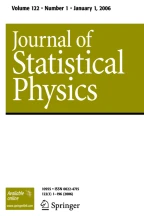Abstract
This paper concerns random systems made up out of a finite collection of elements. We are interested in how a fixed structure of interactions reflects on the assignment of probabilities to overall states. In particular, we consider two simple models of random systems: one generalizing the notion of “Gibbs ensemble” abstracted from statistical physics; the other, “Markov fields” derived from the idea of a Markov chain. We give background for these two types, review proofs that they are in fact identical for systems with nonzero probabilities, and explore the new behavior that arises with constraints. Finally, we discuss unsolved problems and make suggestions for further work.
Similar content being viewed by others
References
J. M. Hammersley and P. E. Clifford, “Markov fields on finite graphs and lattices,” unpublished (1971).
R. L. Dobrushin, “The description of a random field by means of its conditional probabilities, and conditions of its regularity,”Th. Prob. & Appl. [English transl. ofTeoriia Veroiatn.]13:197 (1968).
M. B. Averintsev, “On a method of describing complete parameter fields,”Problemy Peredaci Informatsii 6:100 (1970).
F. Spitzer, “Markov random fields and Gibbs ensembles,”Am. Math. Month. 78:142 (1971).
G. R. Grimmett, “A theorem about random fields,”Bull. London Math. Soc. 5(13):81 (1973).
M. Hall,Combinatorial Theory, Blaisdell (1967).
Author information
Authors and Affiliations
Rights and permissions
About this article
Cite this article
Moussouris, J. Gibbs and Markov random systems with constraints. J Stat Phys 10, 11–33 (1974). https://doi.org/10.1007/BF01011714
Received:
Issue Date:
DOI: https://doi.org/10.1007/BF01011714
